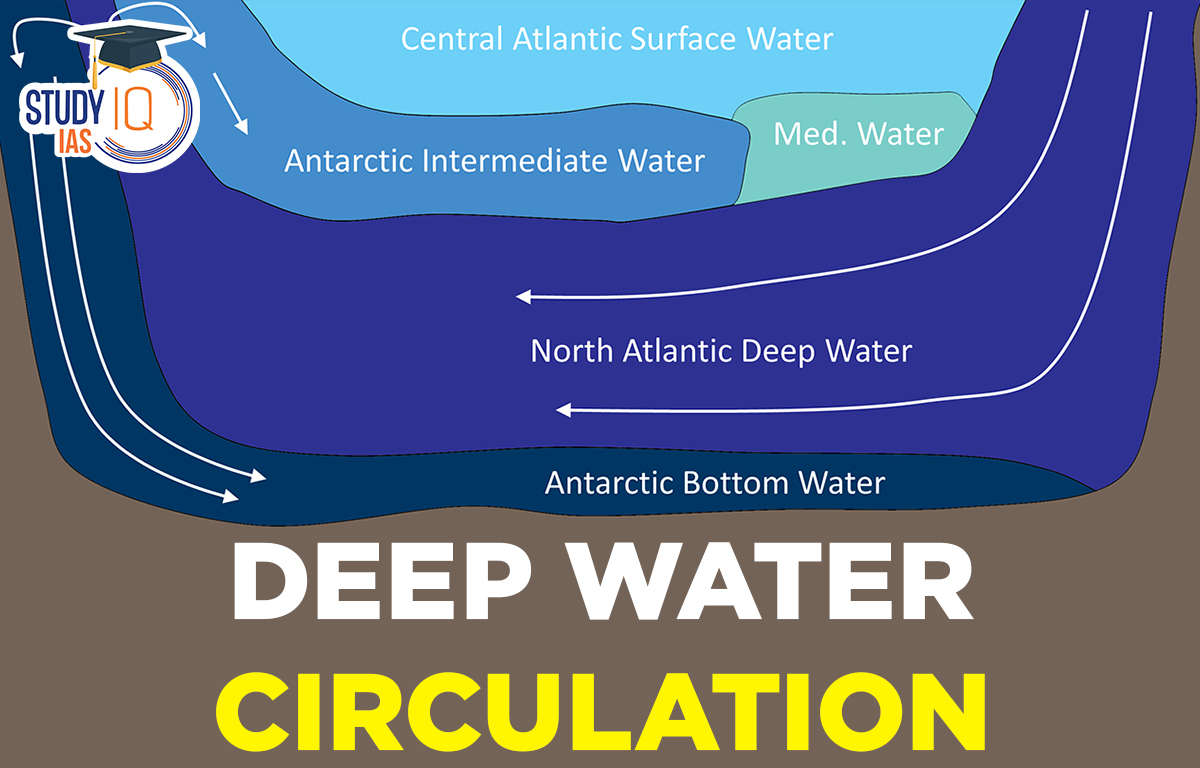Table of Contents
About Deep Water Circulation
- Studies suggest that changes in ocean routes caused by tectonics had a big effect on ocean circulation.
- Global overturning circulation, which is the equatorward transport of cold, deep waters and the poleward transport of warm, near-surface waters — controls ocean heat distribution and atmospheric carbon dioxide levels, thus playing a critical role in global climate.

Key Observations of the Study
- It has been observed that tectonically driven changes in the ocean gateways such as the closure of the Central American Seaway, a body of water that once separated North America from South America, since the late Miocene period, had a dramatic impact on the circulation.
- It is thought that tectonic changes might have led to the formation of two separate water bodies:
- Northern component water (NCW) in the North Atlantic and
- Antarctic Bottom Water (AABW) in the Southern Ocean.
- It is also hypothesised that there would have been large-scale changes in the Deep Water Circulation (DWC) in the oceans across the world, thus impacting global climate through ocean-atmosphere carbon dioxide and heat exchanges.
About Deep Water Circulation
- The movement of water in the deep ocean is termed Deep Water Circulation.
- These deep-ocean currents are driven by differences in the water’s density, which is controlled by temperature (thermo) and salinity (haline). This process is known as thermohaline circulation.
- In the Earth’s Polar Regions, ocean water gets very cold, forming sea ice. As a consequence, the surrounding seawater gets saltier, because when sea ice forms, the salt is left behind.
- As the seawater gets saltier, its density increases, and it starts to sink. Surface water is pulled in to replace the sinking water, which in turn eventually becomes cold and salty enough to sink.

Deep-Water Circulations of the Indian Ocean
- The Indian Ocean does not have any major deep-water formations of its own. It acts only as a host for NCW and AABW- i.e it only receives it from other sources such as the North Atlantic and Antarctic.
- The northern part of the Indian Ocean is located at one of the terminal ends of the Global Ocean currents (GOC), making it a good place to study the impact of ocean circulation changes.
- Studies: Studies have been conducted in the Indian Ocean to understand past deepwater circulation using records from iron-manganese crusts and the authigenic neodymium isotope composition of sediment cores.
- These records have a number of limitations such as:
- Iron-manganese crusts are found at deeper depths and are only bathed by Antarctic Bottom Water (AABW), so they can only provide information about the history of AABW.
- Authigenic neodymium isotope records are only available from the Bay of Bengal region, but they are also not accurate as the Himalayan rivers that flow into the Bay bring in a lot of neodymium particulates which can interfere with the results.
- However, recently Scientists have generated an authigenic neodymium isotope record from the Arabian Sea and reconstructed the DWC record of the Indian Ocean for the period from 11.3 million years ago (Miocene era) to 1.98 million years ago (Pleistocene era).


 Daily Quiz 05 July 2025
Daily Quiz 05 July 2025
 SSC MTS Apply Online for 1075 Posts – ...
SSC MTS Apply Online for 1075 Posts – ...
 Dynamic Pricing: What It Is and Why It's...
Dynamic Pricing: What It Is and Why It's...





















